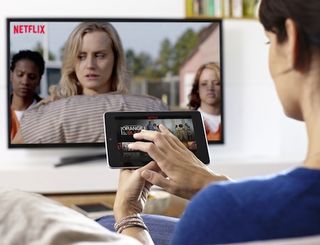How to Succeed at Watching Cable Without Paying for It

A while back, a friend of mine asked me if I was watching some show on her Netflix account. No, I said, I’ve never seen that show and don’t use your Netflix.
It turns out this friend had loaned so many people her Netflix password that she had no idea who was watching what—or even who was watching.
This sharing practice is especially widespread amongst millennials, whether it be with Netflix, HBO Go or another one of the many streaming services. It is also generally overlooked, with networks and OTTs eager to expand their brand and create habits with younger viewers who might pay for their services down the road.
I’m 23, so no matter your age range for millennials, I’m firmly in it. I know a lot of people who don’t have cable—and am fairly certain most of my friends don’t—but I can’t think of anyone I know who doesn’t use Netflix.
Although I don’t pay for cable, I still use it. I have my parents’ AT&T U-verse password—with their blessing, of course—which allows me to watch, as it’s called in the industry, TV Everywhere. The majority of shows I watch are accessible on my laptop because of that login; I can even watch some shows on my TV via apps on my Xbox. I also have Netflix and Amazon Prime, and my TV antenna picks up the signals of three of the big four broadcast networks. You’d think I would be all set.
But all of this doesn’t quite add up to having cable TV.
If I can’t access a show without cable, if I can’t find it somewhere online to stream quickly, clearly and legally, then I’m not watching it. Networks and shows lose out on a potentially dedicated-bordering-on-obsessive viewer, and I miss out on a potentially great show. It’s a lose-lose scenario.
Live sporting events are arguably the greatest obstacle to cord-cutting, and I’m a big sports fan. The teams I root for are rarely on broadcast networks and only occasionally on ESPN, which has an Xbox app but no plans for an OTT service for the time being. I’m much more comfortable yelling at my TV at home than at a bar anyway.
Beyond sports, I just watch too many shows on too many different channels. There are shows on now that I try to keep up with; shows with new seasons coming up that I’m eagerly anticipating; shows I want to binge-watch when I get a chance; shows I want to binge-watch whenever they show up on Netflix or Amazon; and The West Wing, which I always want to watch.
And I know I am not alone in that approach to TV viewing. Today, there are many ways to consume television. Some people only have time to catch up on a show after the fact, so an OTT service is all they need. Other people need to watch their shows live each week so they can live-tweet and follow social media conversations. Plenty of others can’t handle week-long breaks in between episodes and instead watch entire seasons, or series, months later. I have trouble just waiting one day for episodes to show up online.
According to a study commissioned by CEA and NATPE, around half of millennials watch at least some of their TV shows on their laptops; 28% use a tablet and another 22% will watch on their smartphones. That is TV Everywhere in a nutshell. And networks not only do not mind but are actively encouraging viewers to watch on alternate screens.
BJ Elias, who was honored as a B&C Digital All-Star two weeks ago for his work with TV Everywhere as Fox Networks’ senior VP, distribution, told me that he expects TV networks will “eventually become agnostic to which screen people consume.”
That doesn’t mean an iPhone is the ideal screen to watch, say, Game of Thrones. While I’m accustomed to watching TV on my laptop, when a well-made, scripted series is accessible on Xbox and I can watch on my 50-inch TV, I’m constantly blown away. Just like some movies need to be seen in theaters, many TV shows are meant to be seen on an actual TV.
A lot of millennials don’t feel the same way I do, or at least don’t care enough to spend more money (or even have the money) to improve their TV viewing experience. One doesn’t need to look at statistics to know that cord-cutting is up and cable subscriptions are down among millennials.
I don’t know how it will all play out, how millennials’ viewing habits or the industry as a whole will evolve. What I do know is that flipping channels has given way to browsing Netflix in the millennial zeitgeist— and yet, we often have trouble deciding what to watch.
Jonathan Kuperberg is an editorial assistant for B&C.
Broadcasting & Cable Newsletter
The smarter way to stay on top of broadcasting and cable industry. Sign up below
